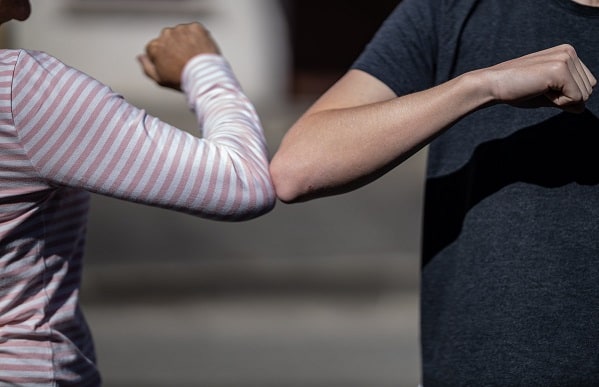
As charitable donors grow eager to return to in-person events, our nonprofit clients have been asking us how to provide those exciting live fundraiser experiences while creating event safety.
At Greater Giving, we learn a lot from our clients’ successes—and we can tell when something is working for them!
The recent trend in inclusive “hybrid” events ticks most of the boxes. These mixed-audience events provide the traditional fundraiser experience many donors are craving while giving donors who would rather stay home plenty of options for getting involved and feeling like part of the fun. Basically, it combines a live benefit gala with the flexibility of a virtual event.
On the live side, guests can view auction items in person, socialize over dinner, and raise their paddles in the appeal—and guests at home can participate in the auction from their mobile devices, just as if they were present. Many nonprofits have also adopted streaming technology to entertain remote guests and bring them into the program, unifying the home and away teams for one fantastic event.
Focus on Comfort, Ease, and Communication in your event safety plan
After more than a year of avoiding public places or large group gatherings, some guests may feel awkward or out of practice attending a live fundraiser again. Others may be ready to jump right in and need a little gentle reminder to maintain social distance. Here are some things we’ve seen nonprofits do to help everyone feel more at ease returning to in-person fundraising events while putting guests’ health and safety first.
1. Provide hand sanitizer throughout your event venue! This one small addition can really help guests feel more comfortable and protected throughout the night.
2. Space out tables in the ballroom to allow a comfortable distance between them, and seat guests more sparsely among them. Attendees from different parties can still socialize during the event while allowing guests to maintain their separate bubbles.
3. If your event has entry requirements (such as proof of vaccination status), streamline your registration lines to keep guests moving through. Long lines can mean a lot of people standing close together, so nonprofits are creating separate stations to accommodate any situations that require extra attention and maintain social distance.
Some nonprofits have approached this additional registration step by providing multiple lines to reduce wait times, so those guests who have vaccination cards—or proof of a recent negative COVID test—can enter the event right away, while special situations are handled by staff elsewhere.
Other fundraisers have chosen to check guest temperatures as they arrive at the venue with instant-read devices. Nonprofits who choose to check temperatures upon entering have had success coupling it with the typical registration phase, along with handing out seating information and bid paddles.
One very large event even offered an instant testing station on-site, where guests could be tested right then and receive their results after a short wait.
We suggest deferring to your local health guidelines for what to require from guests upon entry into your event.
4. Have contingency event safety plans in place for any special or difficult situations, and always prepare for the worst.
5. Create a playbook for staff and volunteers for discussing health regulations with guests. Brainstorm possible scenarios you might run into during registration, and decide in advance how to handle them so everyone is on the same page.
6. If guests will be required to bring anything with them to the event, such as proof of vaccination, communicate with all attendees (including sponsors and their guests!) in advance of the event with this information.
Send out multiple communications so no one is caught off-guard on the night of the event, and ensure the event goes as smoothly as possible for everyone. Remind sponsors to pass it along to their guests and make sure they are aware of any entry requirements ahead of time.
7. Provide guests a language for expressing their comfort level with physical contact to reduce awkwardness among guests. This cool idea came from an organization that handed out stickers of varying colors that guests could use to indicate their comfort level with physical contact, from “handshakes only” to “hugs okay.”
8. Remove the cocktail hour from the live event program to limit the amount of time guests spent socializing, and better maintain social distancing.
